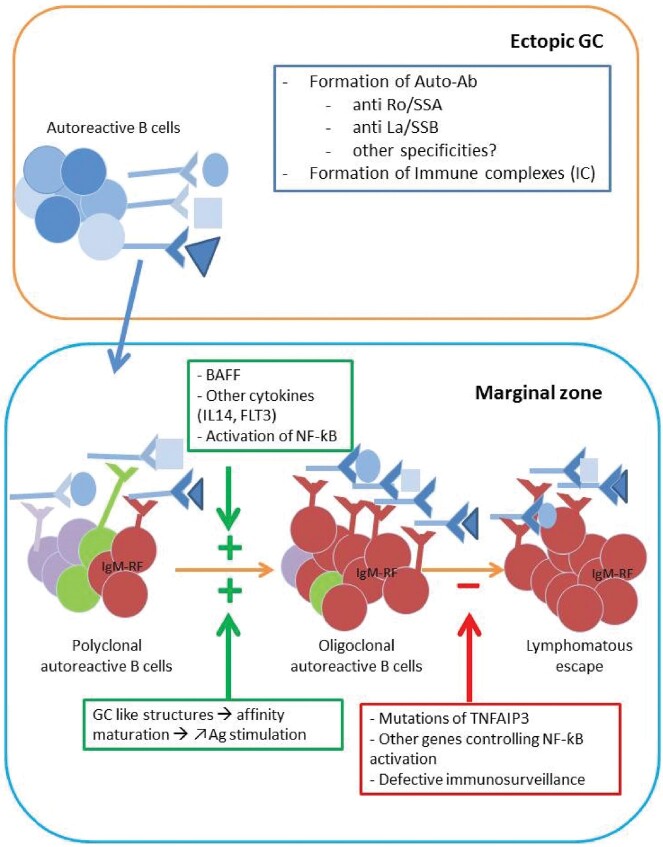Fig. 2.
The 2019 proposed scenario for lymphomagensis in pSS
The development of lymphoma in pSS is a multi-step process that is centered on chronic antigenic stimulation. Formation of auto-Ab is favored within GC-like structures leading to the presence of ICs at high concentrations at epithelial sites. These latter stimulate the expansion of RF-reactive B cells. Affinity maturation within GC-like structures gives a selective advantage to auto-immune clones. The activation of these autoreactive B cells is amplified by several factors including BAFF via paracrine and/or autocrine secretion, cytokines such as FLT-3 or IL-14 and the over-activation of the NF-κB pathway. Loss of immune control of genetic origin (TNFAIP3 mutations) and a less effective anti-tumor immunosurveillance at mucosal sites might precipitate the lymphomatous escape. GC: germinal centres; pSS: primary SS.

